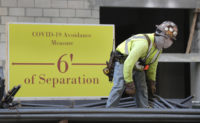The amount of effort spent scheduling the work on today’s construction projects is staggering. In addition to critical-path method schedules, contractors use sketches, Visio graphics, Excel sheets and tools like Touchplan to do the day-to-day scheduling. These schedules are organized by room, system, trade—you name it.

Critical-path method scheduling (CPM) is useful for planning and control. Scheduling software tools sold to do CPM are useful for managing large amounts of data, especially on large construction projects or capital programs.
However, CPM scheduling software sold by major venders in the last 50 years is not effective or practical as the main tool to schedule day-to-day work on large construction jobs. Yet we insist on calling the resulting work product “project schedules.” A CPM schedule is simply too structured to keep up with this level of detail and continuous adjustments to the work. The project team cannot use out-of-the-box CPM scheduling software alone to do the job.
Another shortcoming is that the CPM only provides firm dates for critical activities. Noncritical activities have different early and late dates. If two-thirds of the activities are not critical and have two sets of possible dates (early and late), then by definition, the CPM algorithm (and software used out of the box) cannot be reliable as a construction scheduling tool.
The project team members create their own schedules: weekly lookaheads, weekly subcontractor coordination schedules, equipment production and delivery, milestone pull-planning and owner schedules, among others. These are the true scheduling tools used to plan the crew workweek and assign the day-to-day tasks. All are relevant to the “real” project schedule. This elusive real schedule exists, but it is the product of many schedules and planning processes and is not easily grasped, seen or managed.
Although many contracts require the use of a leading software program, such as Primavera P6, coordination between the many levels and types of schedules is impossible for the software to address and manage. But if we recognize the limits of CPM and how it can benefit our complex endeavors, we will be able to know how much of the risk it manages for us and how we should compensate and supplement it with other tools and processes.
Critical Chain Project Management scheduling may help CPM define when an activity starts and ends. One variation uses two-thirds of task durations and then uses one-third of the overall duration as a completion buffer. The noncritical activities’ late dates become the dates to use. We can implement something similar when doing CPM.
In some project types, such as in power plant outages, CPM is useful. For outages, planning starts years earlier, the project is well-defined before the outage work starts, and all tasks, materials, work assignments and other matters are well known. On such predictable projects, CPM actually produces the job schedule.
Similarly, manufacturing has a high degree of control over its operations, making possible optimization of materials, labor, equipment, deliveries and shipping.
If our projects are not as predictable—and most are not—then what are the limits in using CPM for them? Do we expect too much? Are we forcing the CPM schedule to do too much?
Some ways to improve the use of CPM include limiting the use of long durations for installation tasks; limiting use of negative lags (start an activity before the predicted finish of another); and adding enough detail and logic to reduce total float and the number of activities with long float. When copying and pasting, ensure that nomenclature, scope, and logic are appropriate.
The construction industry needs to better evaluate overall risk by including variability in the CPM that is introduced by supplier bottlenecks, competition from other projects, shifting markets, qualified labor availability, weather and other factors.
If we take a good look at the limits of CPM in construction and find ways to compensate and improve our scheduling processes, we can improve the industry’s risk profile—and that would be a very welcome upgrade.
If you have an idea for a column, please contact Viewpoint Editor Richard Korman at kormanr@enr.com.





Post a comment to this article
Report Abusive Comment